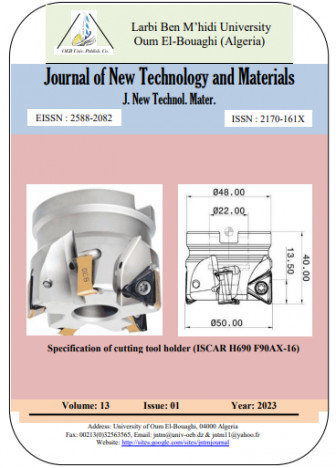Zinc oxide antireflection thin-film: spin coater parameters effects
Keywords:
Antireflective coating, Zinc oxide, Spin coating;, Film thickness, Spin timeAbstract
Zinc oxide (ZnO) is one of the commonly used materials in antireflective coating (ARC) due to its optical, physical, and
chemical properties. In order to enhance optical transmittance, an ARC is essential. Refractive index and film thickness are
the key parameters to get an efficient ARC. The aim of this work is to study deposition parameters’ effects on thickness
evolution and film quality. Spin-coated ZnO film thickness was measured and controlled according to revolutions per
minute (rpm) and spin time (t). For this purpose, a sol-gel derived film containing dihydrate Zinc Acetate (ZAD) and
ethanolamine was used to be spin-coated on a glass substrate. Thermogravimetric analysis (TGA) was carried out in order
to study the film thermal behavior and was followed by X-Ray Diffraction (XRD) measurement in order to confirm the
crystallization of ZnO. The film thickness was deduced from its mass measured by a microbalance and its’ centrifugal
spread over the substrate was checked by an optical microscope. By optimizing the deposition parameters, good film spread
was obtained up to 4000 rpm with a spin time of 90 seconds at least. We found that the rpm affects strongly film thickness,
in contrast to the spin time which affects the film spread





